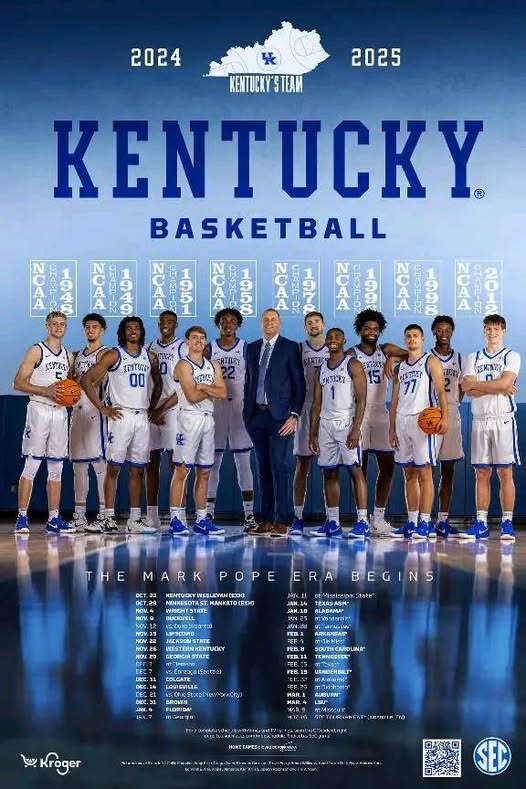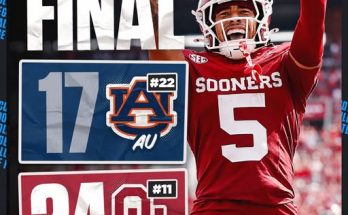Kentucky football is starting to build real momentum on the recruiting trail, and the latest addition to the Wildcats’ 2026 class is another important step in that direction. With the commitment of their third player in the cycle, Mark Stoops and his staff continue to demonstrate a renewed focus on recruiting foundational talent early and decisively.
The Wildcats’ latest commitment, a dynamic and fast-rising prospect, adds not just depth but also potential star power to a 2026 class that is starting to take shape well ahead of schedule. While it’s still early in the process, getting three recruits in the fold this soon gives Kentucky a strong base from which to build, especially as other SEC programs ramp up their efforts.
Kentucky has historically had to punch above its weight in the recruiting world. Competing in the SEC—arguably the toughest conference in all of college football—means you’re up against the likes of Alabama, Georgia, LSU, and Florida on a regular basis, both on the field and in living rooms across the country. The commitment of a third 2026 prospect reflects a strategic shift: the Wildcats are betting on relationships, early evaluations, and player development to close the gap.
The new commit, whose name has been generating buzz in recruiting circles over the past several months, fits the mold of what Stoops and recruiting coordinator Vince Marrow have built their success on—gritty, high-upside players who may not always come with five-star fanfare but possess the tools to develop into elite college athletes. Kentucky has made a habit of turning such prospects into high-impact contributors, and in some cases, future NFL Draft picks.
The addition comes at a time when momentum is critical. Kentucky is navigating a new-look SEC schedule and will soon be part of a broader national conversation with the arrival of the expanded College Football Playoff in 2026. To be competitive in that era, stacking quality classes becomes essential. This latest commitment not only brings talent to the roster but also serves as a signal to other recruits that Kentucky is serious about building a contender.
Recruiting is all about relationships, and in this case, the staff’s persistent contact and early belief in the player paid off. Kentucky was among the first Power Five programs to offer, and they stayed involved throughout the process. While other programs may have joined the race later, the bond that Kentucky built proved to be the deciding factor. That approach has worked in the past and continues to bear fruit.
The Wildcats’ success in early evaluations is part of what separates them from some peers. Kentucky’s staff puts an emphasis on identifying talent before others do. That means getting into high schools early, forging ties with coaches, and trusting their instincts rather than waiting for a player’s star rating to go up. This third commitment reflects that philosophy. While he may not yet be a household name, those in the know understand the type of potential he brings.
There’s also a sense of versatility with this new commitment. He’s not pigeonholed into a specific role but rather offers flexibility that Kentucky can take advantage of depending on how he develops physically and mentally over the next couple of years. That adaptability is crucial in the modern game, where injuries, scheme changes, and transfer portal attrition can all impact a program’s depth chart.
Adding a third commitment early in the 2026 cycle also gives Kentucky some breathing room to be selective moving forward. With a strong foundation in place, they can now afford to chase higher-ranked targets without the pressure of needing to fill major gaps. That’s the kind of strategic advantage that pays dividends down the road when trying to flip a top-tier recruit or fend off a late charge from a rival program.
This commitment also helps Kentucky maintain momentum at a time when perception matters. Recruits notice which programs are putting together classes early. They pay attention to who’s showing stability, who’s making waves, and who’s building something real. Being third to the finish line in a recruiting cycle isn’t just about numbers—it’s about optics, culture, and establishing early leadership among programs that are often overshadowed in the national conversation.
Another factor worth noting is the impact this commitment may have on other targets. The 2026 class is highly relational—players talk, follow each other’s decisions, and often want to play alongside familiar faces or teammates they’ve competed with at camps. The addition of another high-quality player to Kentucky’s class could very well create a domino effect. More commitments may follow simply because top targets now see a clearer vision of what the Wildcats are building.
There’s also value in the psychological component. When you land early commitments, it shows confidence in your evaluations. It tells other prospects, and even your own fan base, that you’re not waiting for others to validate your choices. You’re setting the tone. That kind of confidence has a contagious effect and helps create a positive feedback loop throughout the rest of the cycle.
This momentum also speaks to how well Kentucky has adapted to the new recruiting landscape—one dominated by NIL, the transfer portal, and realignment uncertainty. The staff has leaned into the challenge, understanding that communication, development, and culture now matter more than ever. By securing a third commitment so early, Kentucky is showing that it’s not just surviving in this new world—it’s adapting, thriving, and even leading in certain areas.
From a fan standpoint, this should be a welcome development. The early part of a recruiting class often sets the tone for everything else that follows. Having three commitments by June of 2025 is a luxury Kentucky hasn’t always enjoyed, and it allows fans to start dreaming a little bigger. It gives the program a chance to build hype, create storylines, and generate interest leading into the fall season.
For Stoops, this kind of start to a recruiting class also reinforces the staying power of his program. Stability matters in college football, especially when so many programs experience constant turnover at the top. Kentucky’s staff has largely remained intact, and that continuity is a major selling point for recruits and their families. They know who will be developing them, what the culture will look like, and what to expect both on and off the field.
It’s also worth reflecting on how far Kentucky has come. This wasn’t always a program that could compete for early commitments or win recruiting battles against Power Five foes. The Wildcats have built that credibility over time, brick by brick, and every new commitment is another signpost along that journey. The 2026 class might not be finished anytime soon, but with three players already committed, the foundation is stronger than ever.
Of course, recruiting is only one part of the equation. Player development, strength training, nutrition, academic support—all of those components will come into play over the next couple of years. But it starts with getting the right players in the door. And with this latest commitment, Kentucky has done just that.
There’s still a long road ahead in the 2026 cycle. Other programs will make their moves, flip candidates, and shake up the rankings. But Kentucky is in a strong position early, and that’s exactly where you want to be. They’ve built trust, sold a vision, and delivered a message: Kentucky football isn’t just here to compete—it’s here to win.
For now, the Wildcats will continue working behind the scenes, eyeing more commitments and building on their early success. But make no mistake—this third commitment isn’t just a name on a list. It’s a statement. And if history is any guide, it’s one Kentucky fans will be glad the staff made.



